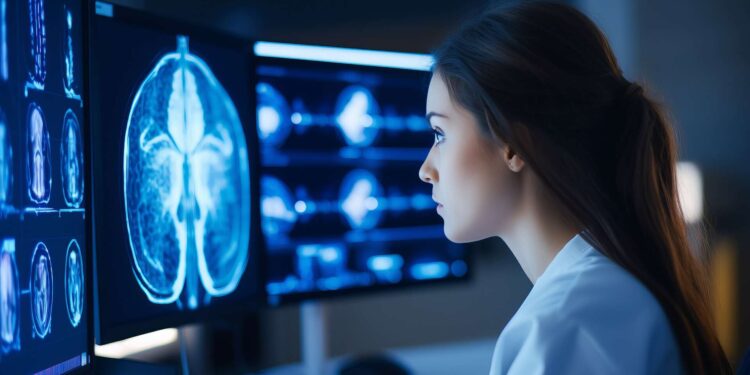Discover the amazing story of Amber Pearson. Long trapped in exhausting rituals and a constant fear of contamination, Amber found new hope thanks to a revolutionary brain implant. Initially designed to manage his epilepsy, this implant had an unexpected and positive effect on his OCD, radically transforming his life.
This will also interest you
(ON VIDEO) A revolutionary implant to prevent Alzheimer’s disease Alzheimer’s disease progressively attacks neurons, first causing memory problems…
Amber Pearson, an American, suffered from obsessive compulsive disorder for a long time (OCDOCD) severe. This pushed her to wash her hands until bleeding appeared, for fear of contamination by everyday objects. The impact on his quality of life was considerable. Thanks to a significant medical breakthrough, his situation has greatly improved. Amber benefited from an innovative brain implant, initially designed to treat her epilepsy. This implant also had a positive effect on his OCD.
A transformed life
Brain implants, recently implemented lightlight by Elon MuskElon Musk and his company Neuralink, are not new. For years, doctors have used deep brain stimulation to treat a variety of disorders, including Parkinson’s disease and epilepsy.
In Amber’s case, doctors offered her a 32-millimeter device to manage her epileptic seizuresepileptic seizures. However, it was Amber herself who suggested leveraging this implant to treat her OCD as well. This idea was seriously considered by his doctor, Dr. Ahmed Raslan, a neurosurgeon at Oregon Health and Science University.
Although the use of deep brain stimulation for OCD has been studied in the past, its association with epilepsy treatment was unpublished. Doctors worked closely with Amber to identify the specifics of her brain activity during her obsessive episodes, including exposing her to stressful elements. They were thus able to precisely target the brain activity linked to his OCD and configure the implant to react to this particular signal. The device implanted in Amber is one of a kind, being the only one to treat epilepsy and OCD simultaneously. It has independent programs for each disorder.
Eight months after the procedure, Amber began to feel a marked improvement. The rituals that once dominated his life, taking up to nine hours a day, have diminished significantly. Repetitive tasks, like checking before bed and excessive hand washing, have been reduced to just 30 minutes a day. In addition, his fear of contamination by eating with others has disappeared.
This medical breakthrough not only offers new hope for Amber, but also for the millions of OCD sufferers in the United States. A study is underway at the University of Pennsylvania to explore how this technique could be applied more widely, opening the way to new treatment possibilities.



